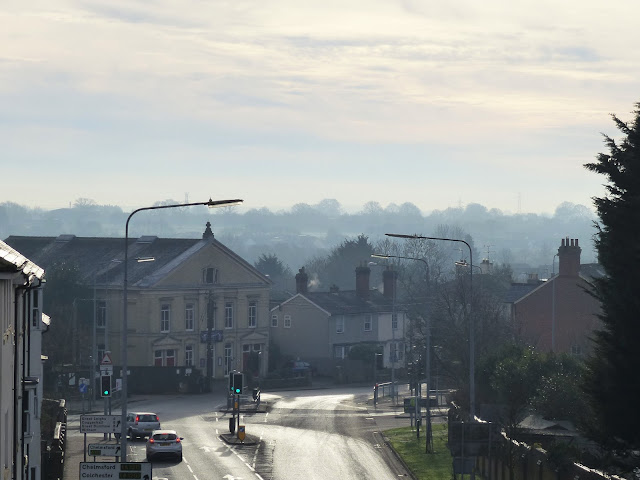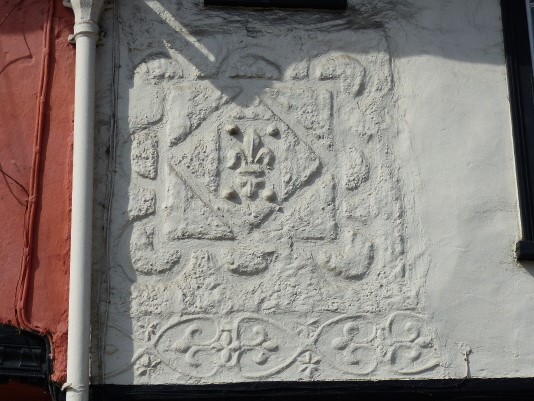The need for fresh air and sunshine forced me out today. This was good as the light was bright and the townsfolks were meandering about, some showing off their new bikes, scooters and clothes, others seeking shiny things in the shops now open.
I soon found myself on the top floor of the large car park from where I thought I may get a picture or two of the town. Here I noticed windows dirtier than mine existed though to be fair it is difficult cleaning windows through those bars.
Old cottages in the distance once used by weavers they say. Narrow houses now but large windows for the time. The attic, now divided, once ran all along the roof space allowing for long bales of cloth to be laid out. A good example of the craft that once flourished in this area for hundreds of years.
I was much taken with the sign saying "Pedestrians: Way Out" and pointing to either direction. There are no stairs and this means the only way out is through the 'window' on either side. I went on further myself...
The low lying sun leaving a kind of blue haze in the distance caught my attention. Such a sun is wonderful, bright, cheery and blinding at times. So bright that my sister a few days ago left a shop, was blinded by such sun and walked into the closed door! This left her flat on her back being attended to by the staff who it must be said treated her well, this was in Livingstone. They fussed while she just wanted to go home. At home everyone laughed, I laughed, and at the doctors he laughed, she just suffered a bruise or two and hurt pride, but she is used to that.
In among the Victorian and mock Victorian chimney pieces on show we can see the benefits of being a country town, the masses of trees in the distance. These lie among the farmland that developers are desperate to turn into concrete and mass money in offshore accounts. Most of the populace are not so keen. The town has grown from 30,000 to 40,000 in the 20 years I have been here and lost some of its innocence with the introduction of 'London overspill' and the like. A type of less friendly person is appearing and this affects us all. People are less likely to speak in passing as they used to do though many still do and 'old folks' constantly complain about the changes, as they do.
The mist does create colour changes which I love. Darker nearby and lightening with each item in view as it heads off into the distance. Some were complaining tonight that driving was difficult with the mist, I suspect it will be worse first thing in the morning. Not too much traffic just now mind. Next Wednesday I suspect before life as normal returns.
While standing there on this near deserted open top floor of the car park I noticed the pigeons suddenly take flight as if aware of a predator of some sort. Two flocks took off in different directions, joined immediately by all other hangers on, yet remarkably quickly settled down once again. I could see no obvious enemy so it may have been a false alarm. It does show however that being a bird is not an easy life. The weather, lack of food and predators mean you are forever looking around for danger. We are much safer that we realise, a bird is constantly afraid.
Pointing a camera at a bright sun offers a dark picture. I could have fiddled with it but

































